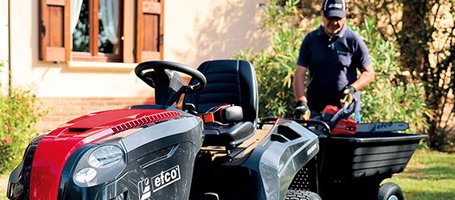The same thing happens to all soil, no matter how big or small the plot of land, from home vegetable patches to farmland in the countryside. Production declines with every passing year due to loss of soil fertility, the technical name for which is “soil exhaustion”. In this article, we explain what it involves, how to prevent it and how to regenerate exhausted soil.
Soil exhaustion in the field and vegetable patch
Let's start with a definition: “soil structure” refers to the way in which the elementary solid particles (silt, clay, sand) that make up the soil are organised in space. The ratio between this solid part and the porosity (or “empty spaces”) of the soil gives you a clue as to its fertility: in other words, how easily it allows roots to develop; microorganisms to live; and air, water and any nutrients dissolved in the water to circulate.
Soil is no longer fertile when its physico-chemical characteristics have deteriorated to the point that it has lost porosity (i.e. it is compacted) and when it contains little organic matter. This situation results in less availability of nutrients and oxygen; persistence in the soil of toxins (allelochemicals emitted by plants through the roots to defend their “living space”, especially by vegetables such as peppers, potatoes and nightshades in general); and an abnormal increase in pathogens (which are no longer held in check by other terrestrial organisms).
On the other hand, what has a positive effect on soil structure? Several factors, including organic matter—which generally always leads to improvement—and micro- and macro-fauna such as earthworms, which dig tunnels, mix organic matter and inorganic material, etc.
How to prevent loss of soil fertility
The saying “prevention is better than cure” also applies to gardening and agriculture. So, before symptoms of soil exhaustion appear, do what you can to safeguard the fertility of the soil. Here’s how:
-
Practice crop rotation, paying attention to the species most vulnerable to pests.
-
Don’t leave soil bare, instead sow green manure crops or cover crops: we talk about this in more detail in the next paragraph.
-
Fertilise only when necessary and without overdoing it, selecting organic fertilisers if possible.
-
Avoid tilling the soil too intensively, also making sure that you do not compact it.
Crop rotation involves growing different species in the same area from one year to the next, following a 3–4-year cycle. It applies to agricultural land, but also to vegetable patches. It means not growing the same vegetable in the same spot for several years in a row, but choosing to plant vegetables from different plant families, or based on different nutritional needs.
For organic fertiliser you can use mature manure or compost, to replenish the chemical elements that plants need (such as nitrogen, phosphorus and potassium) and to restore mineralised organic matter over time. Organic matter actually helps depleted soil to:
-
ensure a reserve of macro- and micro-nutrients for plants
-
maintain the variety of organisms (biodiversity) that live in it
-
become less compacted and more porous
-
increase its permeability, thereby improving drainage and preventing water stagnation
-
facilitate gas exchange with the atmosphere
-
better retain moisture
-
stabilise pH (on this subject, you can read our article on how to acidify soil).
Why not make compost yourself, i.e. home composting? See our guide to making your own compost, which features instructions for building a garden composter.
On the one hand, tilling is essential to regenerate exhausted soil, because it increases its porosity and oxygenation and ensures that any organic matter you add is thoroughly mixed in. On the other hand, by turning over the soil too deeply, you risk burying the most fertile layer and bringing the inert layer to the surface or, in any case, altering its equilibrium. So, it is better to use tools that mix the soil, such as a rotary tiller or rotary cultivator, and to work the soil with hand tools whenever possible, such as a spade, pitchfork, hoe or rake.
The coming and going of people and the movement of tillage tools compact the soil. Therefore, avoid treading on cultivated earth, by creating paths and using them as much as possible. Furthermore, in the long run, the use of a rotary tiller or rotary cultivator can create what is known as a “hardpan”, which is a compacted layer under the tilled soil.
How can you transport all the materials and equipment you need to take care of soil in the garden or countryside? To effortlessly move heavy and bulky loads, the best alternative to a conventional wheelbarrow is a transporter, or trailer that can be attached to your garden tractor.


How to regenerate soil that is no longer fertile
In order to become fertile again, exhausted soil needs to recover nutritional elements, active fauna and optimal physico-chemical characteristics. The cure is not rest—because leaving the soil uncovered will lead to further loss of fertility—but cultivating with cover crops or green manure. These are agricultural techniques that you can use in the vegetable patch, including in the autumn-winter period when it is largely uncultivated.
Cover crops act a bit like a “living mulch”. In practice, they are herbaceous species that are planted not for harvesting, but to protect and enrich the soil, by providing nutrients and making it more porous (thanks to thick roots that decompact it at depth). The best species to sow are legumes (for example clover, alfalfa and broad beans), grasses (oats, rye, barley etc.) and mustards/crucifers (such as rapeseed, mustard and rocket). Green manure is a variant of cover crops in which the crops are shredded or mowed and then buried on the spot, thus turning it into organic fertiliser.
Speaking of vegetable patches, here you will find a series of in-depth articles; from our vegetable patch preparation guide (which describes how to till soil) to our overview on getting the most out of your vegetable patch (influence of the moon and seasons, how to organise crops, fertilise and irrigate). Last but not least, read our seasonal tips on how to keep the vegetable patch healthy in winter and how to protect the vegetable patch from the heat.









